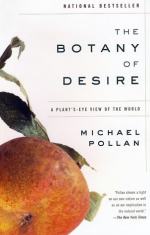
|
| Name: _________________________ | Period: ___________________ |
This test consists of 5 multiple choice questions, 5 short answer questions, and 10 short essay questions.
Multiple Choice Questions
1. The book states that certain flowers are reminiscent of Greek Gods. The rose and the peony are stated to be flowers of ______.
(a) Dionysus.
(b) Zeus.
(c) Apollo.
(d) Venus.
2. The consensus in Holland was that the tulip ______ was the most beautiful flower in the world and a masterpiece.
(a) Queen of Darkness.
(b) Queen of Night.
(c) Semper Augustus.
(d) Black Dahlia.
3. The flower that is presented as being the symbol of the human desire for beauty is the ______.
(a) Tulip.
(b) Carnation.
(c) Lily.
(d) Rose.
4. During the lifetime of Johnny Appleseed, Ohio law required a settler to put out ___ apple or pear trees in order to get a land grant.
(a) 50.
(b) 20.
(c) 30.
(d) 40.
5. The process through which humans and plants have shaped each other over the years is known as _______.
(a) Co-dependence.
(b) Co-occurence.
(c) Co-evolution.
(d) Co-emergence.
Short Answer Questions
1. The book states that all of the following are capable of prodigies or of shifting themselves in form except _______.
2. ________ was an American Pioneer and introduced the apple in the Midwestern United States.
3. In the book, Johnny Appleseed was called a benign _________ of the American Fronteir.
4. The _____ was linked to the corruption of the Catholic church, while the apple was linked with wholesome Protestantism.
5. Appleseed was able to compete with other apple cultivar sales because his trees were ______.
Short Essay Questions
1. What are some of the ways in which flowers have been created to attract the attention of humans, according to Pollan?
2. What happens as a result of the different environments in which a flower might be able to grow?
3. Why did Pollan plant tulip bulbs when he was a child, according to his own reflections?
4. What happens as a result of having perfect symmetry in a flower, according to Pollan's writing in the book?
5. What does Pollan find to be mythical about the story of Johnny Appleseed, although it is a true story?
6. What is the possible coincidence that Pollan points out between the flowers and their ability to arouse desire in bees?
7. What did the Ottoman Turks discover about the wild tulips they found during one of their trips?
8. What does the presence of flowers tend to tell a person about the area in which they are walking or traveling?
9. What happens when a person plants the seed of an apple tree into the ground? Will the resulting tree produce the same apples?
10. Why does Chapman not want to have anything to do with the grafting of apple trees in order to breed certain strains?
|
This section contains 684 words (approx. 3 pages at 300 words per page) |

|




